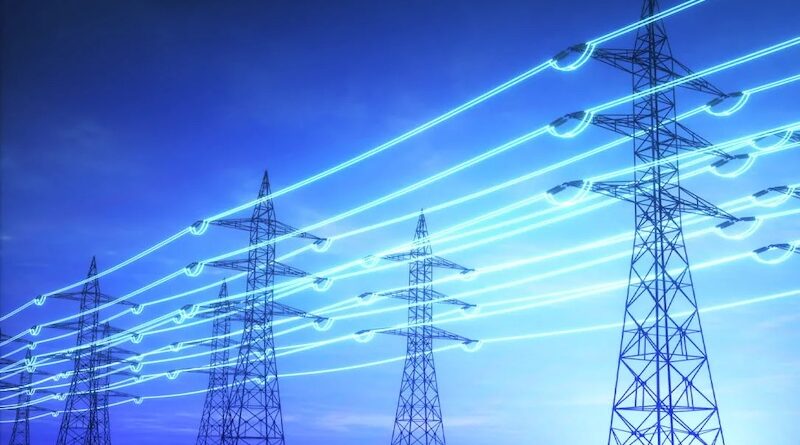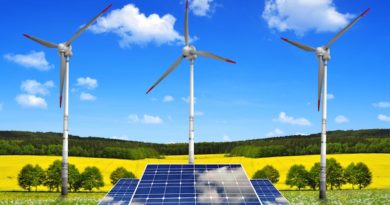
Reducing Energy Costs in Europe: An Imperative for Competitiveness
Europe faces a major economic challenge: its energy prices are among the highest in industrialized economies. This situation threatens the competitiveness of its businesses and burdens households. As the world enters an era of accelerated energy transition, how can the European Union not only reduce costs but also ensure a stable and sustainable energy future?
An Alarming Reality: Energy in Europe Is Too Expensive
The numbers speak for themselves. In 2024, gas prices in the EU were nearly five times higher than in the United States. Industrial electricity prices were two and a half times higher than across the Atlantic. This is not a new phenomenon, but it is becoming increasingly concerning as it hinders European economic development and places European industries at a competitive disadvantage compared to the United States, China, and India.
Why such a disparity? The main explanation lies in the very structure of energy supply in these regions. The United States has benefited from a major energy revolution with the rise of shale gas, allowing it to become a net energy exporter. In contrast, Europe remains highly dependent on fossil fuel imports, particularly liquefied natural gas (LNG).
This reliance on imports leads to considerable additional costs. Unlike the U.S., where gas can be transported directly via pipelines, imported LNG in Europe requires liquefaction, maritime transport, and regasification, all of which increase its final price. In this regard, Mario Draghi’s report reminds us that the EU is the world’s largest importer of gas and LNG, yet its collective bargaining power remains underutilized.
Furthermore, European market rules pass on the volatility of fossil fuel prices to end users, preventing them from fully benefiting from the advantages of decarbonized electricity production.
All this, not to mention geopolitical tensions and recent crises, has highlighted Europe’s vulnerability to energy price fluctuations.
The Four Components of Energy Costs
The final price of electricity and gas in Europe is based on four main components:
1️⃣ The cost of energy itself, which depends on fuel prices (gas, coal, oil) and production costs for renewable and nuclear energy.
2️⃣ Network costs, covering investment and maintenance of transport and distribution infrastructure.
3️⃣ Taxes and levies, often higher in Europe than elsewhere.
4️⃣ Charges related to supporting renewable energy, due to its intermittency, funded by consumers through their bills.
In this context, the key question is: how can these costs be lowered without compromising the energy transition?
The Energy Transition: A Key Lever to Reduce Costs
Faced with this situation, one answer stands out: accelerating the transition to clean, domestic energy. Europe has already made significant progress in decarbonization, with a growing share of renewables (wind, solar, hydropower) and a gradual decline in fossil fuels in electricity production.
However, for this transition to result in a real cost reduction, it must be accompanied by appropriate policies. Today, four major levers must be activated to maximize the economic benefits of the energy transition:
1️⃣ A Fairer Distribution of Costs
Currently, European households—though this varies widely among member states—often pay more for electricity than industries. On average, a European household pays 50% more per kilowatt-hour than an industrial company. In some countries, this gap is even more pronounced.
Why?
Some large industries benefit from preferential rates and exemptions from certain taxes and levies. While this policy aims to protect industrial competitiveness, it also raises questions of fairness.
To ensure a successful energy transition, it is crucial to encourage households to first save energy and then to electrify (electric cars, heat pumps, etc.). If electricity costs remain too high, this transition could be slowed. A fairer distribution of costs and a revision of energy taxation are therefore essential.
2️⃣ More Flexible Consumption
With the rise of renewable energy, electricity production is becoming more variable. It is therefore essential to adjust demand accordingly. Today, many consumers are not incentivized to adapt their consumption based on real-time electricity prices, limiting system efficiency.
Mechanisms such as dynamic pricing or incentives for flexibility could allow households and businesses to reduce consumption during peak hours and use more electricity when it is abundant and cheap.
In Germany, for example, some companies participating directly in the wholesale market already adjust their consumption based on price variations, reducing their costs while contributing to grid stability.
3️⃣ Better Coordination of Investments at the European Level
Today, each European country makes its energy investment decisions relatively independently (through national energy and climate plans). However, Europe has a major asset: an interconnected electricity grid, which allows for the optimization of energy production and distribution across the continent.
Better coordination of investments, particularly in renewable energy and electricity transport infrastructure, would reduce costs and strengthen energy security. For instance, developing offshore wind farms in the North Sea could benefit multiple countries simultaneously through enhanced interconnections.
4️⃣ Deeper Integration of the European Electricity Market
Finally, Europe must go further in integrating its electricity market. Currently, bottlenecks persist, limiting electricity exchanges between certain countries. The example of the interconnection project between France and Spain, which took years to negotiate, shows that political and technical obstacles still hinder this integration.
To maximize the economic and environmental benefits of the energy transition, it is crucial to invest massively in electricity transport infrastructure and further harmonize regulations between member states.
A Competitive and Sustainable Energy Future
Europe’s energy future is at a turning point. The energy transition is a unique opportunity to reduce dependence on imports, stabilize prices, and ensure greater energy sovereignty.
The good news is that renewable technologies are becoming increasingly competitive. Today, generating electricity from solar panels or wind turbines is already cheaper than building new gas or coal power plants in many countries. By 2030, solar power could become the cheapest electricity source almost everywhere in the world.
By optimizing its energy policies, Europe could cut its energy costs in half by 2050, according to some projections. This shift does not depend solely on technology but also on bold political choices.

Bibliographie :
Principalement basé sur
Heussaff, C. (2024) ‘Decarbonising for competitiveness: four ways to reduce European energy prices’, Policy Brief 32/2024, Bruegel




